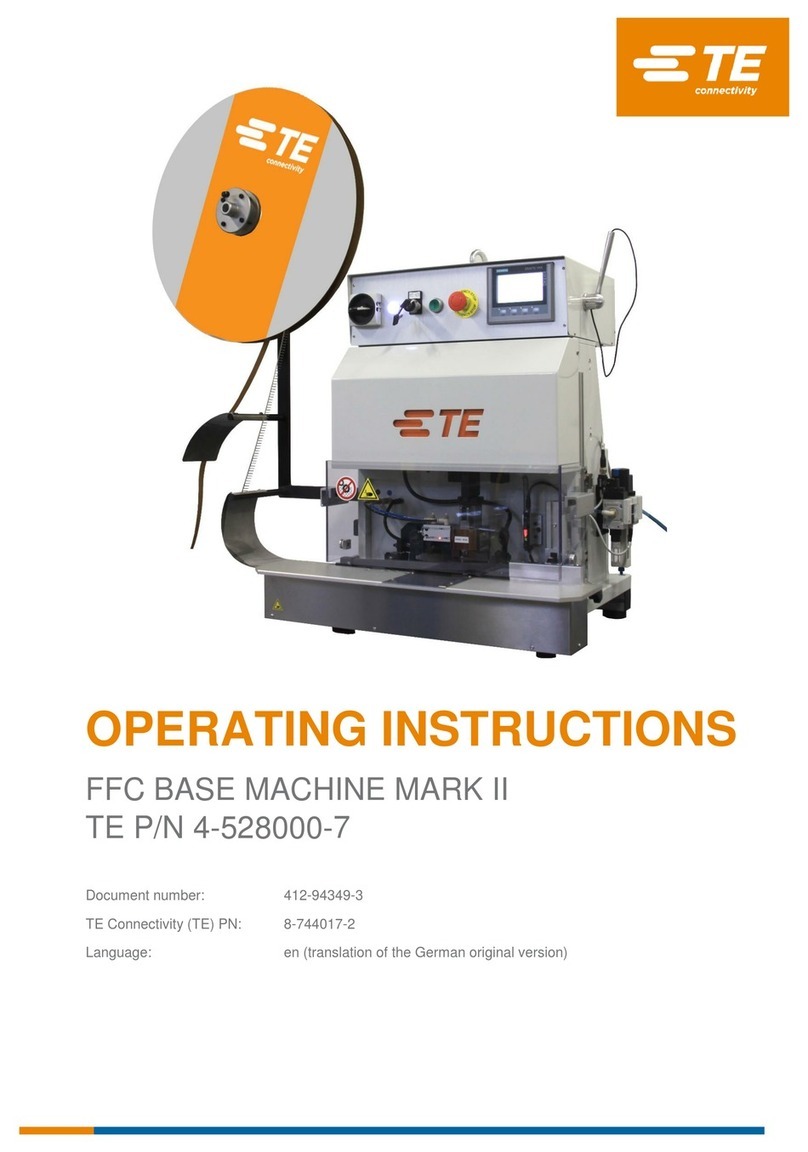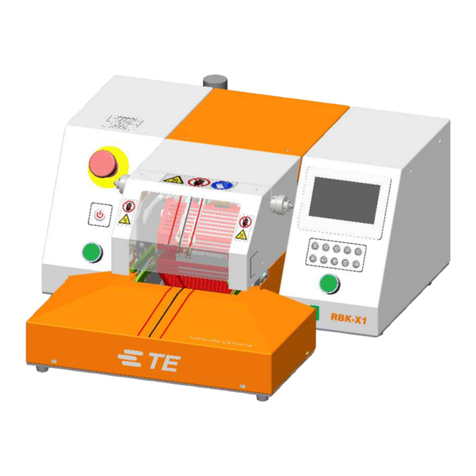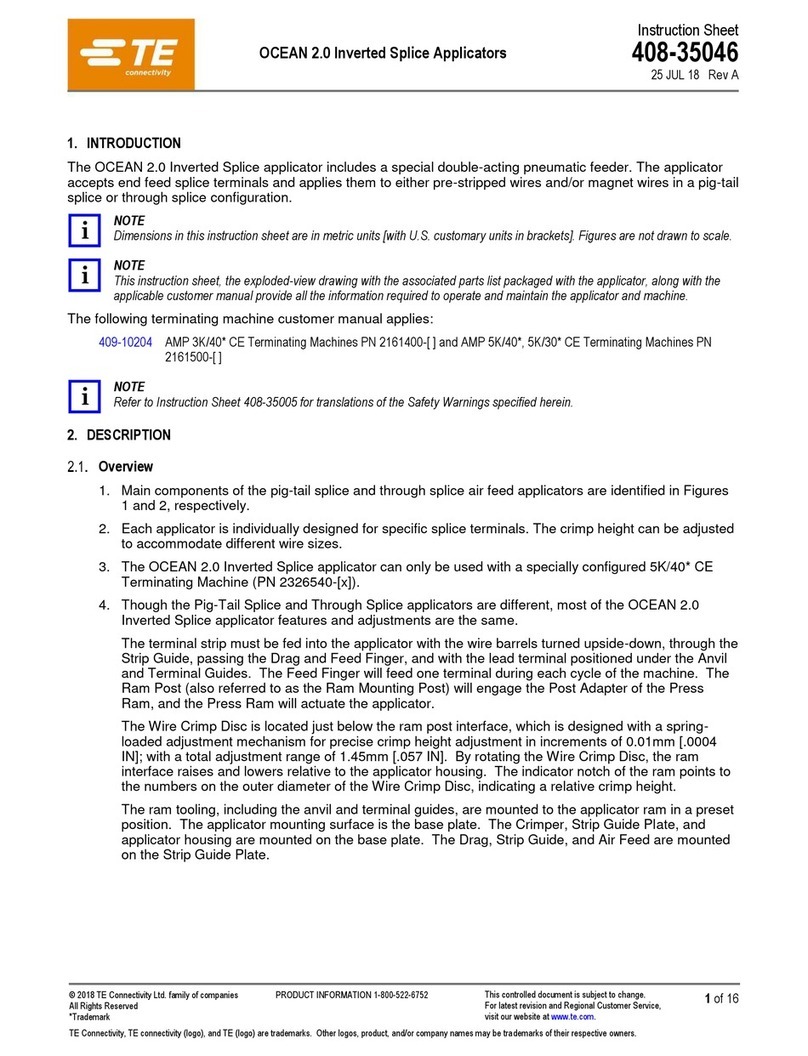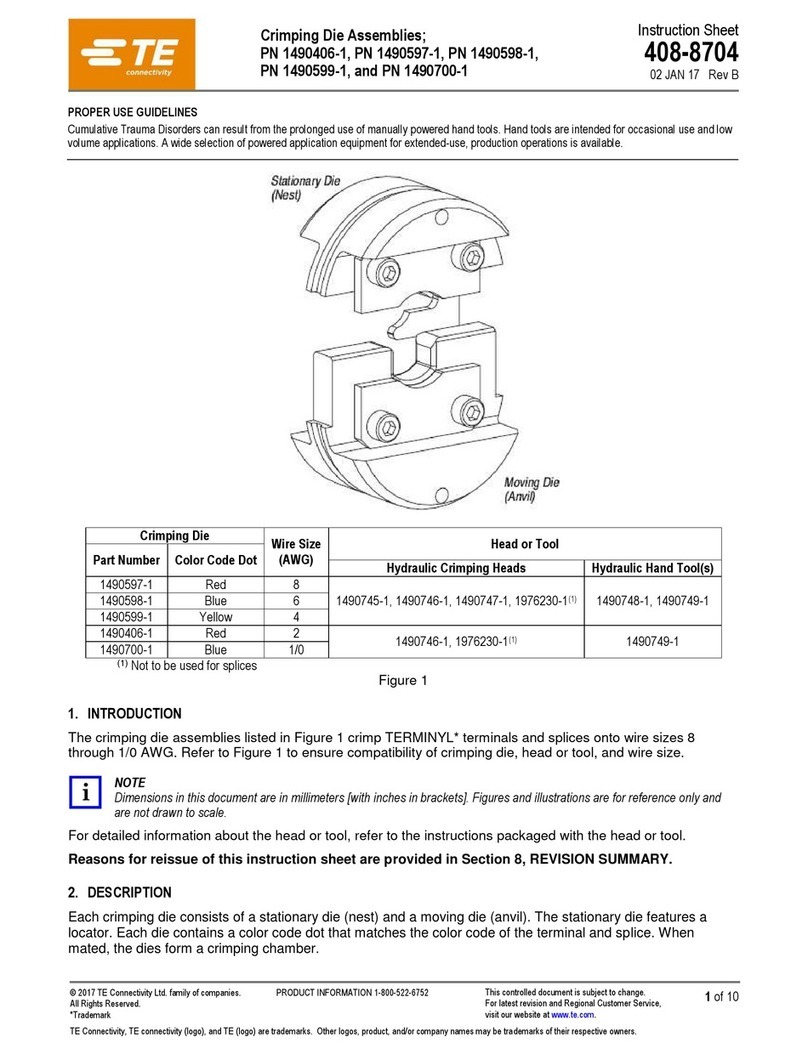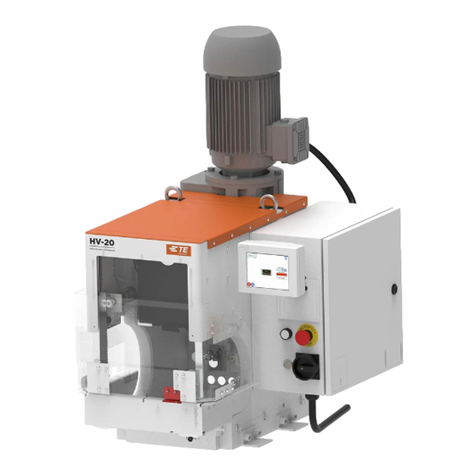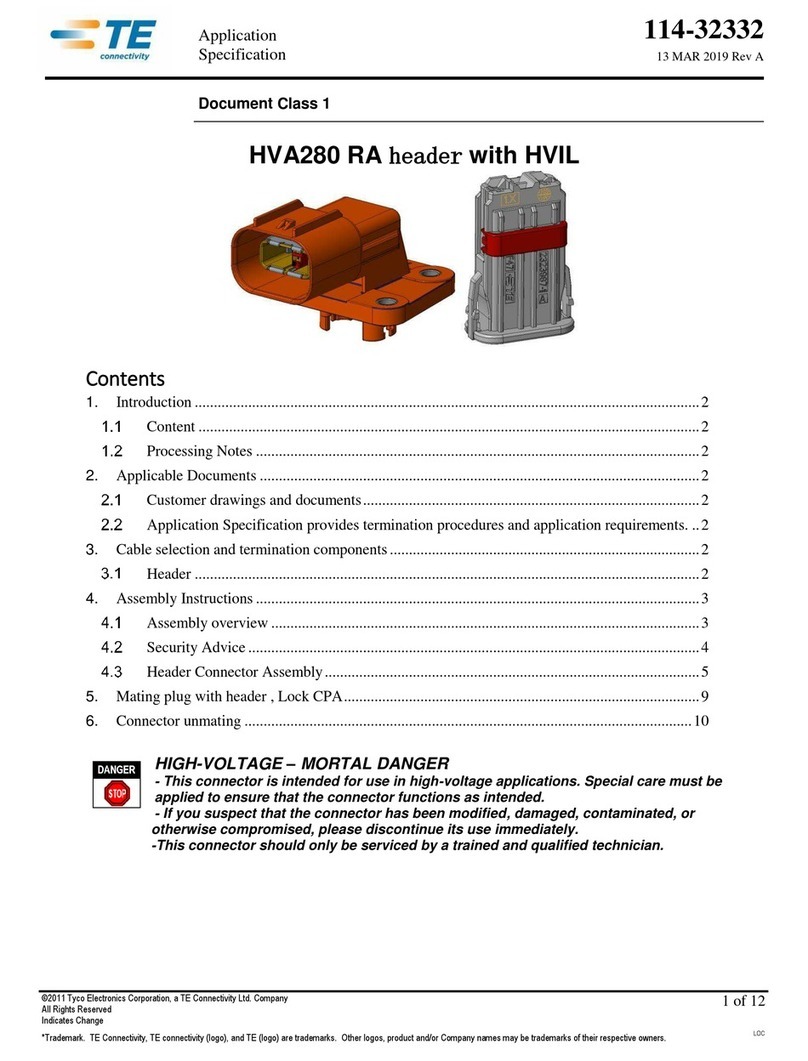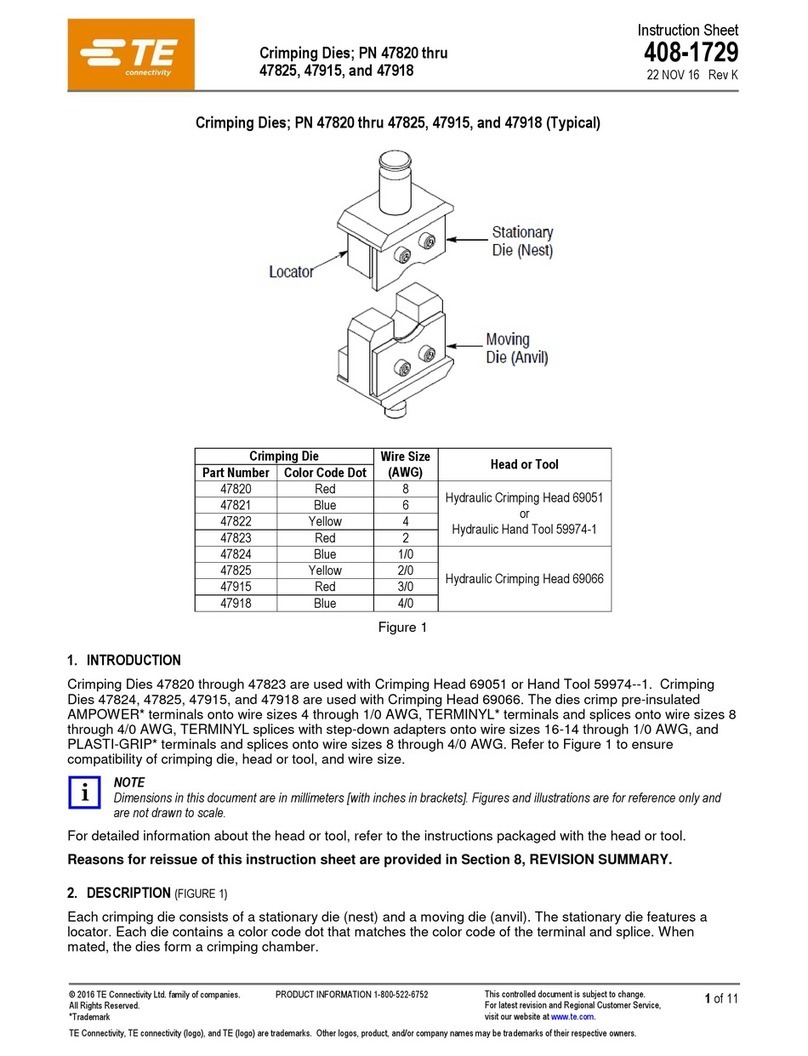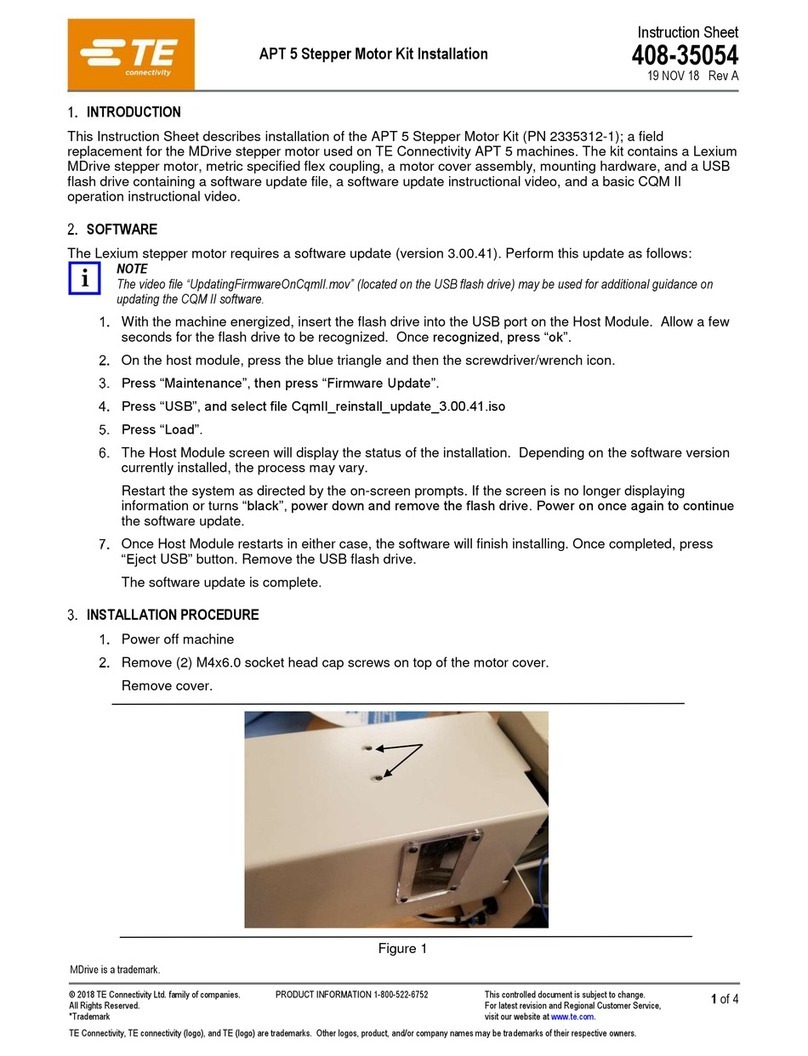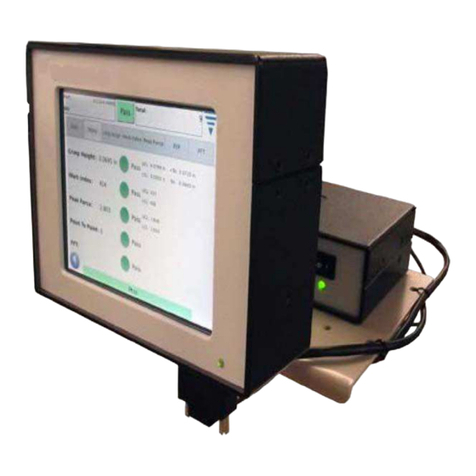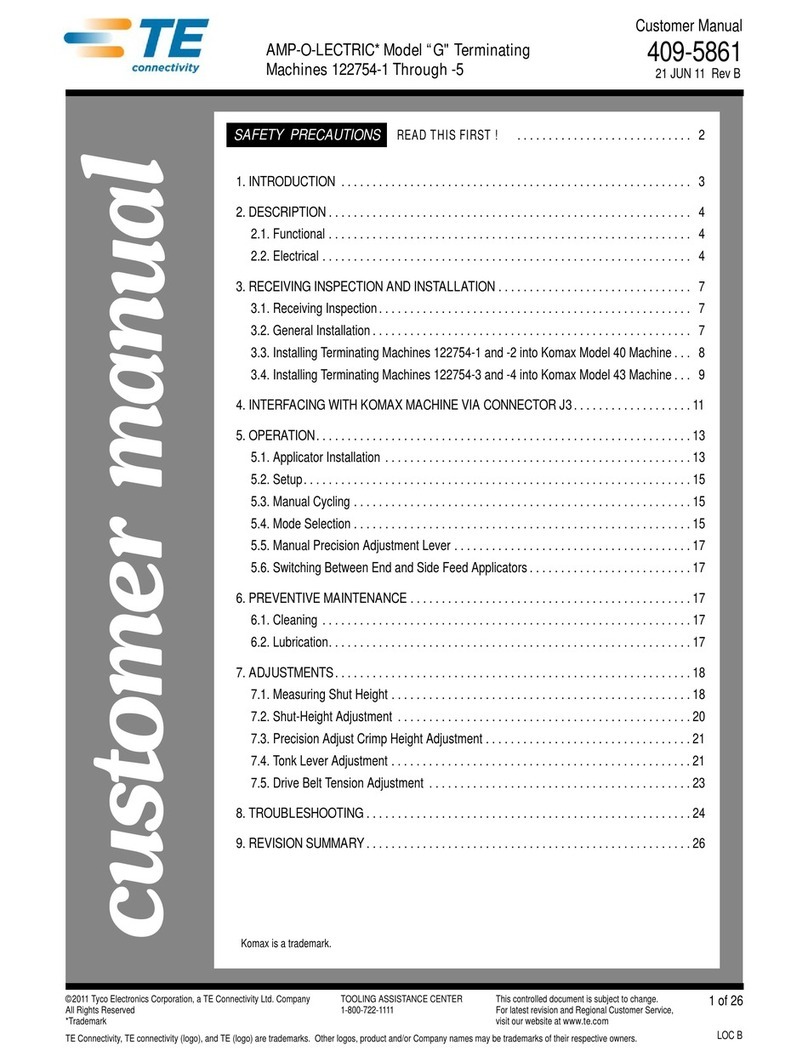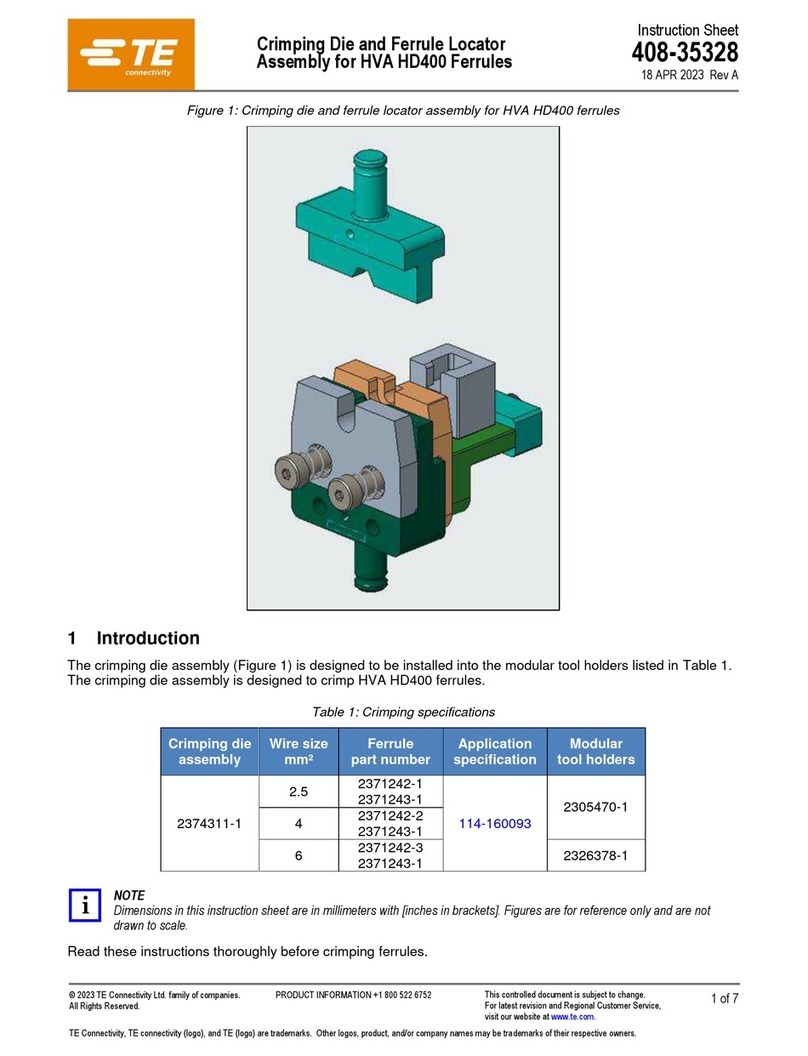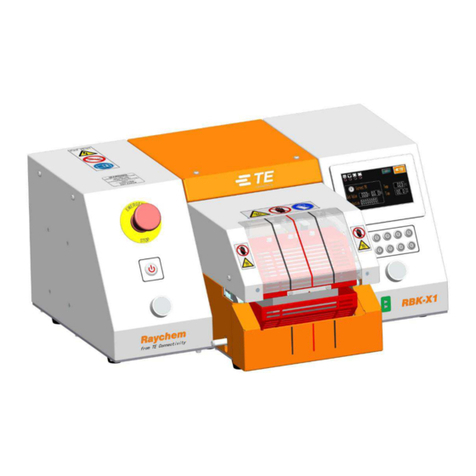
409-5128
7of 61
Rev Z
2.4. Electrical System (Figure 5 and Figure 6 )
The electrical system of the basic machine consists of a motor, trip control box, transmission solenoid, foot
switch, barrier strip, main power (control) switch, work lamp, panel light, and wiring. The basic electrical system
may be modified when adapted for special applications.
The machine must be connected to an adequate electrical outlet. Refer to Figure 2 for machine voltage and
current specifications. The electrical current is supplied directly to the double-pole, single-throw main power
switch (S2) and to the work lamp (DS1) which contains an integral switch (S1). Power from the main power
switch, when placed in the "on" position, is supplied to the barrier strip (TB1) and to the panel light (DS2). From
the barrier strip, power is supplied to the motor (B1), which runs continuously when the control (main) switch is
"on."
The trip control box (A1) and transmission solenoid (L1) are connected to the barrier strip and are controlled by
the foot switch (S3). When the foot switch is depressed, it activates the trip control to provide a pulse of electric
current to energize the solenoid. The solenoid will not energize again until the foot switch is released, then
depressed again. This prevents double-cycling of the machine.
Some applicators require an interlock switch. The switch is wired in series between the trip control box and the
transmission solenoid to prevent the solenoid from being energized until the switch is mechanically actuated.
Basic machine wiring is shown in Figure 5 and the electrical schematic is shown in Figure 6.
For accurate, up-to-date drawings, see the drawings shipped with the machine.
3. RECEIVING INSPECTION AND INSTALLATION
3.1. Receiving Inspection
These machines are thoroughly inspected during and after assembly. A final series of inspections is made to
ensure the proper functioning of each machine before packaging and shipping.
However, damage may occur during shipment. While unpacking the machine, remove the outer bands from the
carton or crate, lift off the outer box, and CAREFULLY inspect the complete machine for damage. If damage is
evident, file a claim against the carrier and notify Tyco Electronics Corporation, Harrisburg, Pennsylvania.
3.2. Factors Affecting Machine Placement
The location of the machine in relation to the operator is essential to both safety and efficiency. Studies have
repeatedly shown that fatigue will be reduced and efficiency increased if particular attention is paid to the bench,
the location of the machine on the bench, the operator's chair, and the placement of the foot switch (see
Figure 7).
A. Bench
A sturdy bench 711 to 762 mm [28 to 30 in.] high aids comfort by allowing the operator's feet to rest on the
floor and the weight and leg position to be easily shifted. The bench should have rubber mounts to reduce
noise. An open area under the bench should allow the chair to slide far enough in for the operator's back to be
straight and supported by the chair backrest.
B. Machine Location on the Bench
The machine should be located near the front of the bench and securely bolted to remain stationary. The
target area (tooling area where the terminal is applied) should be 152 to 203 mm [6 to 8 in.] from the front
edge. This eliminates unnecessary operator motion and helps prevent back strainand fatigue. The target area
should face the front of the bench and be parallel to the edge (access to the back of the machine must also be
provided).
C. Operator's Chair
The operator's chair should swivel, and the seat and backrest should be padded and independently
adjustable. The backrest should be large enough to support the back both above and below the waist. In use,
the chair should be pulled far enough under the bench so that the operator's back is straight and supported by
the backrest.
